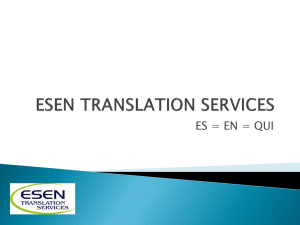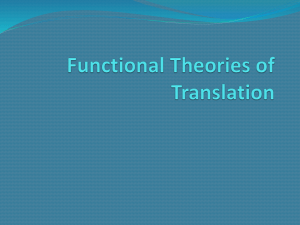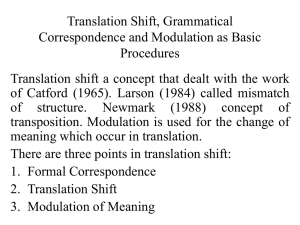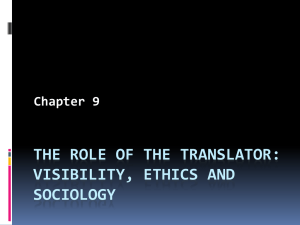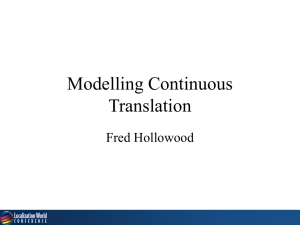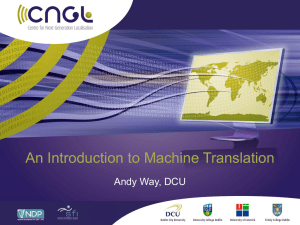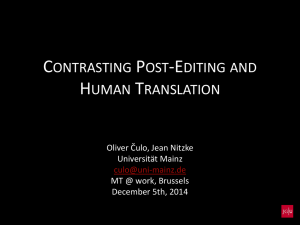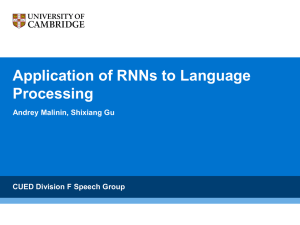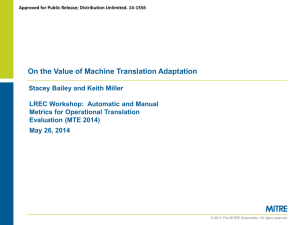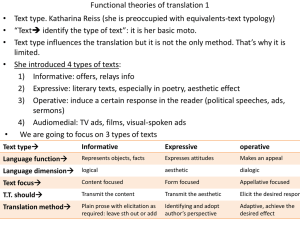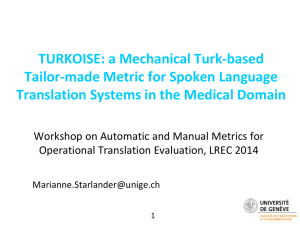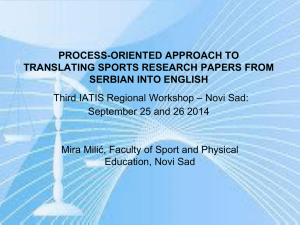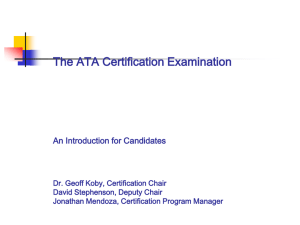Holistic vs Analytical Assessment in Legal Translation
advertisement
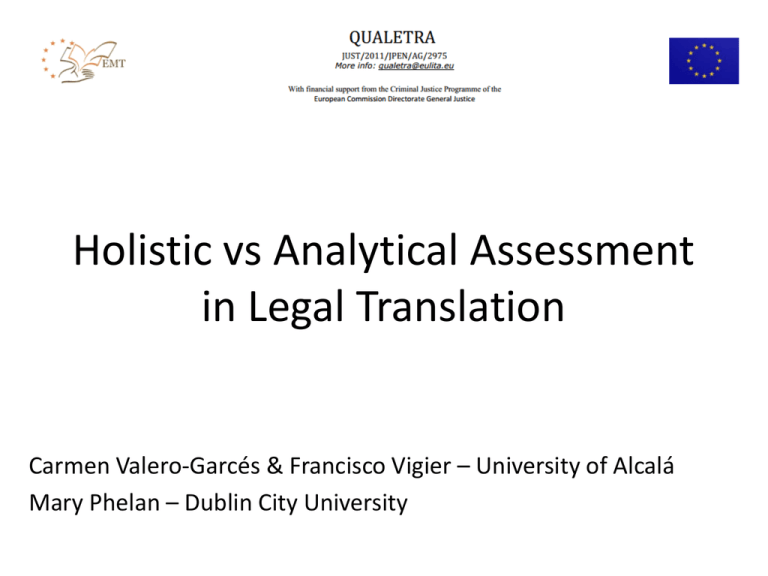
Holistic vs Analytical Assessment in Legal Translation Carmen Valero-Garcés & Francisco Vigier – University of Alcalá Mary Phelan – Dublin City University • Assessment in Translation Studies and Professional Practice • Introduction to HA – Research Study on HA in Legal Translation • Introduction to AA – Research Study on AA in Legal Translation • Conclusions 2 Assessment in Translation Studies and Professional Practice • Underresearched area • Common problems in TQA (Williams 2009) – The evaluator – Level of target language rigour – Seriousness of errors – Sampling vs full-text assessment – Quantification of quality – TQA purpose 3 What is Holistic Assessment? • The evaluator gives a TT a rating (0-10) or evaluative letter (e.g. A = excellent, B = very good) based on an overall impression • Frequently used in both academia and industry • Advantages less time-consuming and assessment of translations at the discourse/text level not at the sentence/word level (Garant 2009) • Some attempts of systematization (Waddington, 2001) • Disadvantages subjective, hence arbitrary, intuitive, unscientific, unsystematic and unreliable; does not provide a clear justification of the result (Waddington 2001) 4 Research Study on HA in Legal Translation • Analyse strengths and weaknesses of holistic methods for the assessment of legal translation ( interrater reliability) • One of the WS1 essential documents translated into SP by a student on MA in Translation • That translation assessed numerically (0-10) by ten evaluators • Evaluators surveyed on their assessment method 5 6 Results • Numeric assessment 7 Results (2) • Survey – Most evaluators ranked pragmatic errors as those with highest relevance and linguistic errors as those with lowest relevance – Very different opinions expressed by respondents as to the translation’s strengths and weaknesses (i.e. “The message is appropriately conveyed. It fulfills its communicative function” vs. “Errors regarding sense, coherence, punctuation... A poor quality translation” assessment is based on personal criteria, thus subjective and variable 8 Analytical Assessment ANALYTICAL ASSESSMENT 9 ATA • ATA system – (a) grid, (b) flowchart and (c) Explanation of Error Categories 10 ATA Grid ATA CERTIFICATION PROGRAM Exam Number: FRAMEWORK FOR STANDARDIZED ERROR MARKING Exam Passage: Version 2009 1 2 Check here if for Review 4 8 16 Code Reason UNF Unfinished (if a passage is substantially unfinished, do not grade the Errors that concern the form of the exam Treat missing material within the passage as an omission exam) ILL Illegibility IND Indecision, gave more than one option Translation/strategic/transfer errors: Negative impact on understanding/use of target text MT Mistranslation (use a subcategory if possible) MU - Misunderstanding of source text (if identifiable) A - Addition O - Omission T - Terminology, word choice R - Register F - Faithfulness L - Literalness FA - Faux ami (false friend) COH - Cohesion AMB - Ambiguity ST - Style (inappropriate for specified type of text) OTH - Other (describe) Mechanical errors: Negative impact on overall quality of target text. Points may vary by language. Maximum 4 points G Grammar SYN - Syntax (phrase/clause/sentence structure) P Punctuation SP/CH Spelling/Character (usually 1 point, maximum 2, if more than 2 points, another category must apply) 0 0 x 2 0 x 4 = 0 0 x 8 = 0 D Diacritical marks/ Accents C Capitalization WF/PS Word form/ Part of speech U Usage OTH Other (describe) 0 Column totals A grader may stop marking errors when the A grader may award a quality point for each of Quality points are subtracted from the error point total to yield a final score reaches 46 error points up to three specific instances of exceptional score. A passage with a score of 18 or more points receives a grade of translation Fail. Quality points (maximum 3) 0 Final passage score (subtract quality points from error points) 0 =0 Total error points (add column totals): 0 11 ATA flowchart 12 • UAH text – holistic - 532 words in ST • DCU text – analytical – 256 words in ST • 5 assessors – three in Europe plus two ATA assessors 13 Evaluators’ Verdicts Assessor Score Verdict Spanish evaluator 2 9 Pass Spanish evaluator 3 16 Pass Spanish evaluator 1 23 Would accept it with reservations ATA evaluator 1 45+ Fail ATA evaluator 2 43 Fail 14 Conclusions • HA: subjective method with a low degree of inter-rater reliability • Cost and time efficiency HA as supplementary method for LT assessment? • AA: even though the system appears selfexplanatory, there is a lot of variation in the overall result. • AA: The ATA evaluators have years of experience of using this method. 15 References Garant, M. (2009). A case for holistic assessment. AFinLAe Soveltavan kielitieteen tutkimuksia 2009, 1, 5-17. Waddington, C. (2001b). Should translations be assessed holistically or through error analysis? Hermes, Journal of Linguistics, 26, 15-38. Williams, M. (2009). Translation Quality Assurance. Mutatis Mutandis, Vol 2, No 1., 3-23 16 Thank you! Carmen Valero-Garcés Francisco Vigier Mary Phelan carmen.valero@uah.es francisco.vigier@uah.es mary.phelan@dcu.ie
